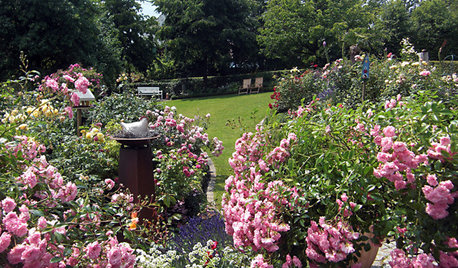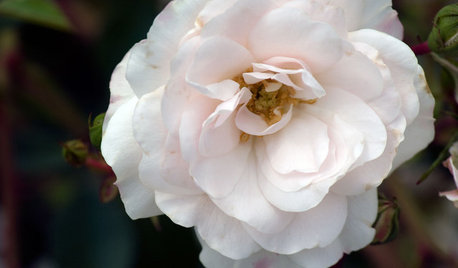How do you encourage roses to repeat bloom?
eeekk
12 years ago
Related Stories

HOUSEPLANTSHow to Force Amaryllis Bulbs Indoors
Enjoy vibrant red blossoms even as gardens turn snowy white, by teaching this hardy repeat performer to ignore the calendar
Full Story
WINTER GARDENINGPruning Secrets for Exquisite Roses
Encourage gorgeous blooms year after year with this time-tested advice on how to prune your rosebush in winter for health and shape
Full Story
DECORATING GUIDESModern Life Makes Room for Blooms
Vintage florals still look lush and lovely on upholstery, curtains, wallpaper and more
Full Story
GARDENING GUIDESTop 12 Summer-Blooming Perennials for Deer-Resistant Drama
Can you have garden color, fragrance and exciting foliage with hungry deer afoot? These beauties say yes
Full Story
PLANTING IDEASGreat Garden Combo: Rose + Clematis for Small-Space Impact
We all need somebody to lean on. And when a rose supports a climbing vine, the results can totally transform a small garden
Full Story
GARDENING GUIDESLearn the Secret to Bigger and Better Roses
Grow beautiful roses using both ordinary and unusual soil amendments
Full Story
GARDENING GUIDESWhat Kind of Roses Should You Grow?
Want to add the beauty of roses to your garden? Find out which ones, from old-fashioned to modern, are right for you
Full Story
GARDENING GUIDES6 Wonderfully Easy Roses for Any Gardener
Look like an expert even if you're just starting out, with these low-maintenance gems of the rose world
Full Story
GARDENING GUIDES5 Sweet to Spirited Pink Roses for an Enchanting Garden
Whether you go demure or daring, there's a pink rose here to make you flush with garden pride
Full Story
GARDENING GUIDES5 Favorite White Roses for a Purely Beautiful Garden
How does your garden glow? With roses that look like light and smell divine
Full StoryMore Discussions






jacqueline9CA
michaelg
Related Professionals
Essex Landscape Architects & Landscape Designers · Waunakee Landscape Architects & Landscape Designers · Anderson Landscape Contractors · Peabody Landscape Contractors · Tempe Landscape Contractors · Avocado Heights Landscape Contractors · Los Banos Landscape Contractors · Mesa Landscape Contractors · Oklahoma City Landscape Contractors · Pahrump Landscape Contractors · St. Louis Landscape Contractors · Thonotosassa Landscape Contractors · San Pablo Landscape Contractors · Ferguson Landscape Contractors · Palos Heights Landscape Contractorstaoseeker
hartwood
roseseek
catsrose
ingrid_vc so. CA zone 9
karenforroses
dennisb1
michaelg
eeekkOriginal Author
kathy9norcal
predfern
dani33
seil zone 6b MI
dregae (IN, zone 6b)
dani33
dani33
dublinbay z6 (KS)
Molineux
zack_lau z6 CT ARS Consulting Rosarian
michaelg